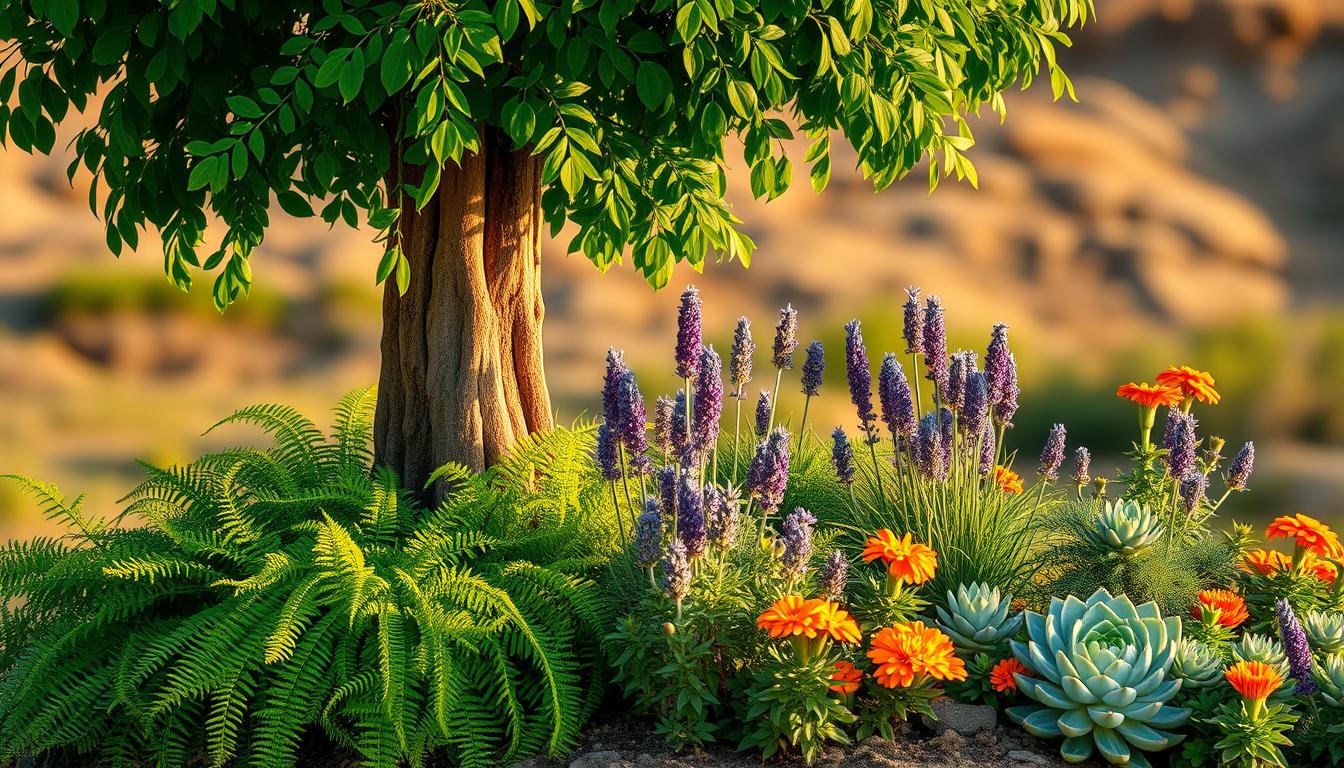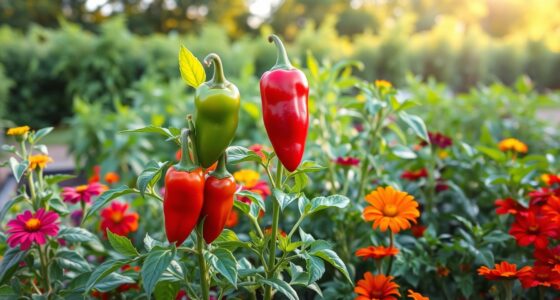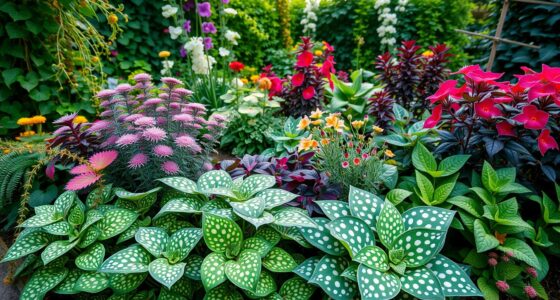Imagine walking into your home and being greeted by a flourishing Money Tree, its leaves reaching for the light, embodying both beauty and abundance. The charm of a Money Tree (Pachira aquatica) is undeniable, but did you know that its benefits can be magnified through companion planting? The right money tree companion plants can elevate its health and infuse your indoor garden with a stunning aesthetic. In this article, we’ll unveil the best companion plants for money tree, guiding you through their advantages, care requirements, and how they can create a harmonious environment for your beloved plant. Let’s embark on this journey together, investing in your green sanctuary, one companion at a time.
Key Takeaways
- The right companion plants enhance your Money Tree’s health.
- Many companions will boost aesthetics in your space.
- Understanding care requirements is key to success.
- Companion planting can improve pest resistance.
- Choosing the best plants creates a balanced indoor garden.
What is a Money Tree Plant?
The money tree plant, scientifically known as Pachira aquatica, is an attractive indoor plant admired for its unique braided trunk and lush green leaves. This tropical plant has gained a reputation not just for its aesthetics, but also for the belief that it brings good luck and prosperity to those who care for it.
Overview of the Money Tree’s Features
One of the remarkable money tree features is its adaptability to a range of indoor environments. These plants flourish in bright, indirect sunlight yet can tolerate lower light conditions, making them perfect for various spaces, from offices to living rooms. The money tree plant’s braided trunk enhances its visual appeal, and its thick leaves can grow to be quite large, contributing to a lush atmosphere.
Benefits of Growing a Money Tree
Among the benefits of money tree plant care, air purification stands out. These plants actively remove toxins from the air, improving the overall quality of your indoor environment. Additionally, their ability to thrive with minimal care makes them an excellent choice for both seasoned and novice plant owners. You can enjoy the calming presence of this beautiful plant while reaping the rewards of an improved atmosphere, making it a cherished addition to your home.

Benefits of Companion Planting
Companion planting offers a multitude of advantages that can significantly enhance your gardening experience. This practice encourages mutually beneficial relationships between plants, improving not just survival but thriving in your indoor garden.
Enhancing Growth and Health
One of the most significant benefits of companion planting lies in its ability to support and enhance plant growth. Certain plants can provide essential nutrients to the soil, allowing your Money Tree to absorb better and flourish. For example, integrating nitrogen-fixing plants can enrich the soil over time, creating a more robust environment for your Money Tree and its companions.
Pest Control Through Companion Plants
Pest management becomes easier with companion planting. Plants such as the Spider Plant and Peace Lily can act as natural deterrents, discouraging common pests from invading your indoor garden. This natural barrier reduces the need for chemical pesticides and promotes a healthier environment for all your plants, enhancing plant growth overall.
Boosting Aesthetic Appeal
Beyond the practical benefits of companion planting, there is a significant aesthetic component. A diverse grouping of plants can create a lush and vibrant atmosphere in your home. The visual variety not only attracts attention but revitalizes your indoor space, making it more inviting and enjoyable.
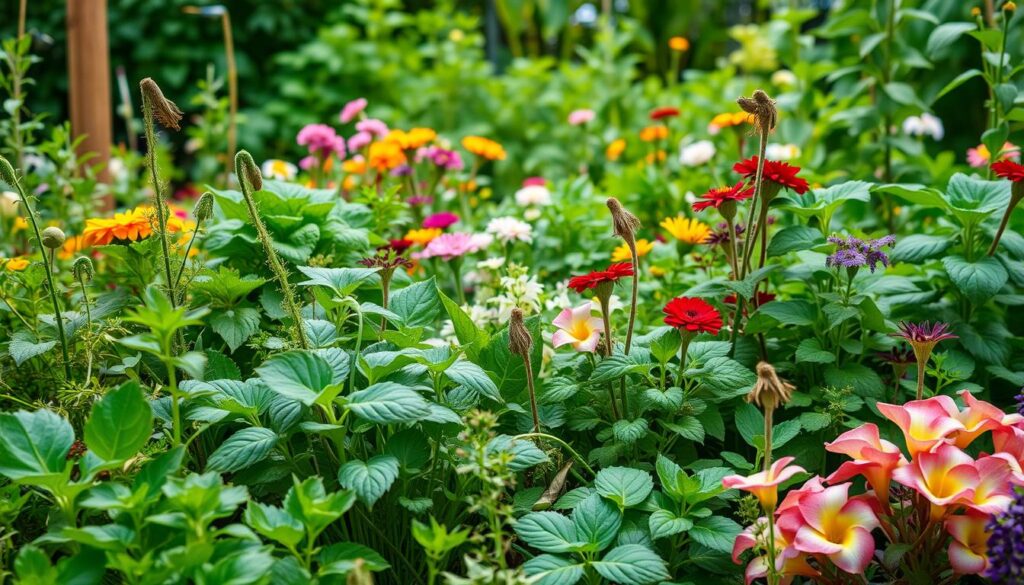
Ideal Climate for Money Tree and Companions
Creating the perfect environment is crucial for your Money Tree and its companion plants. Understanding the ideal climate for money tree growth involves more than just an average room temperature. These plants thrive best in specific temperature ranges and humidity levels that mimic their natural habitat.
Temperature Preferences
Money trees generally prefer temperatures between 60°F and 75°F. This range supports their growth while preventing stress from extreme heat or cold. When placed in environments that consistently meet these money tree temperature preferences, you can expect healthier foliage and a more vibrant appearance. Avoid drafting areas or places where temperatures fluctuate significantly, as this can be detrimental.
Humidity Requirements
The humidity for indoor plants, including Money Trees, should ideally be around 50-70%. Maintaining this level helps to prevent issues like leaf drop or browning edges. To achieve the necessary humidity, consider using a humidifier or simply grouping your indoor plants together. They not only benefit from increased humidity levels but also promote a naturally lush environment that enhances their beauty.

Top Companion Plants for Money Trees
Choosing the best companion plants for your Money Tree can greatly enhance its growth and overall aesthetic. Here are some top plant options that thrive alongside a Money Tree while providing additional benefits.
1. Pothos: A Versatile Companion
Pothos is a favorite among indoor gardeners for its stunning cascading vines and ease of care. With similar light and water requirements, you can enjoy the Pothos benefits while boosting the beauty of your indoor garden. This plant not only adds visual interest but also helps create a vibrant living space.
2. ZZ Plant: Low Maintenance Choice
The ZZ Plant stands out for its low maintenance nature. Ideal for beginners, ZZ Plant care involves minimal effort, making it an excellent companion for your Money Tree. Both plants appreciate similar indirect light conditions, and the ZZ Plant’s thick, glossy leaves add a beautiful contrast to the Money Tree’s foliage.
3. Spider Plant: Air Purifying Benefits
Spider Plants are renowned for their air-purifying qualities. Placing them near your Money Tree not only maximizes your indoor garden’s aesthetic appeal but also enhances the air quality in your home. These plants require moderate light and water, aligning nicely with the requirements of Money Trees.
4. Snake Plant: An Excellent Match
The Snake Plant, often referred to as a hardy houseplant, makes a remarkable addition to your indoor setup. Like the Money Tree, it thrives in similar light and moisture conditions. This compatibility allows both plants to flourish together, providing an added layer of greenery to your environment.

Avoiding Harmful Companions
When cultivating a Money Tree, ensuring proper money tree plant compatibility is crucial. Not all plants serve as beneficial companions. Some can harm your Money Tree’s health and growth. Understanding which plants to steer clear of will enhance your gardening experience.
Plants to Steer Clear Of
Keep an eye out for certain plants that rank as incompatible plants for money tree. For example, cacti may not share the same humidity requirements, potentially drying out the soil needed for a healthy Money Tree. Additionally, herbs like mint can grow aggressively, overshadowing the Money Tree while attracting unwanted pests and disease.
Identifying Signs of Poor Compatibility
Observing your Money Tree closely can help pinpoint issues tied to plant compatibility. Signs you may notice include:
- Drooping leaves, indicating stress from competition.
- Stunted growth, suggesting inadequate resources.
- Yellowing leaves, often a sign of nutrient deficiency.
By recognizing these signs, you can act quickly to remedy the situation, ensuring your Money Tree thrives among its companions.
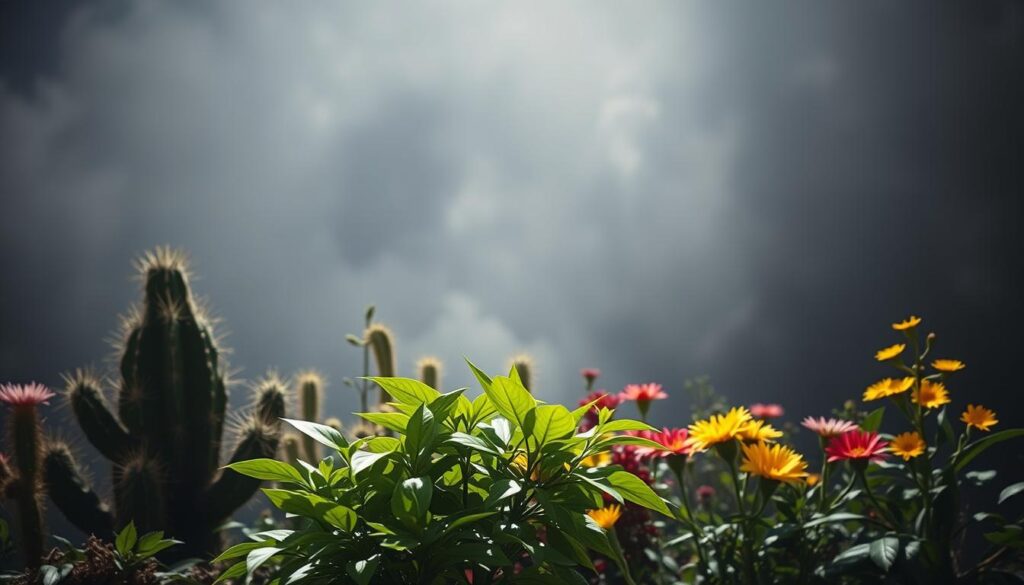
Soil and Potting Needs
Understanding the soil requirements is essential for ensuring the health of your Money Tree and its companion plants. Selecting the right money tree potting mix is paramount to supporting growth and vitality, as well as addressing specific potting needs for money tree. A combination of well-draining components and moisture-retaining materials will create the ideal environment for your plants.
Best Potting Mix for Money Trees
The best potting mix for Money Trees should consist of a blend that maintains moisture without becoming waterlogged. A recommended mix includes:
- 1 part potting soil
- 1 part perlite
- 1 part orchid bark
This combination ensures proper drainage while providing the necessary nutrients. The perlite enhances airflow to the roots, while the orchid bark improves moisture retention, making it a well-balanced choice for indoor conditions.
How to Prepare Soil for Companion Plants
When preparing soil for companion plants, consistency is key. Using a potting mix similar to that of your Money Tree can help create a harmonious growing environment. Look for soil for indoor plants that is lightweight and drains well. To prepare the soil:
- Combine equal parts potting soil, perlite, and peat moss.
- Mix thoroughly to ensure uniform consistency.
- Consider adding a slow-release fertilizer to enhance nutrient availability.
This mixture fosters healthy root development and minimizes the risk of overwatering, essential for maintaining the vigor of both the Money Tree and its companions.
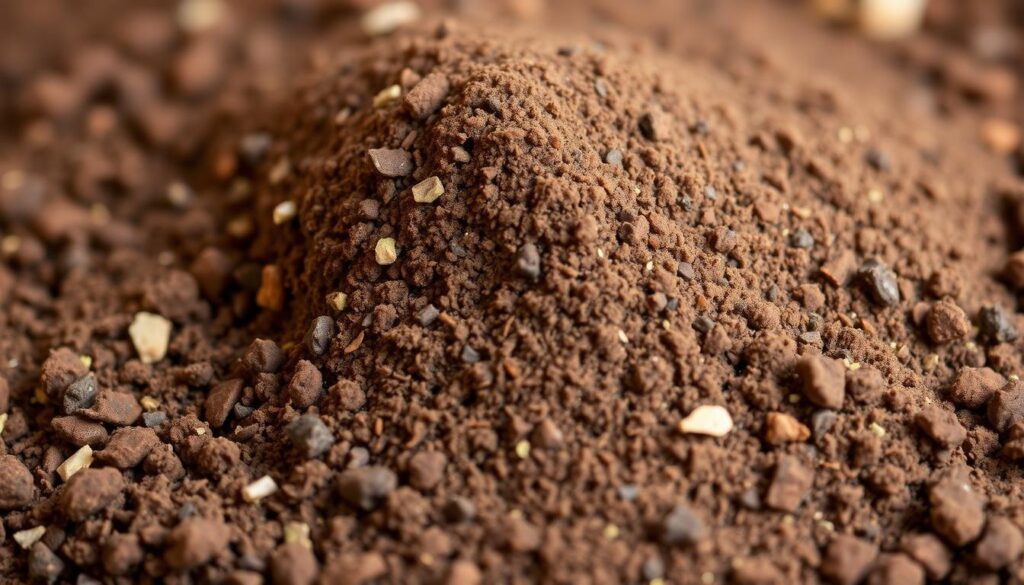
Watering Guidelines for Money Trees and Companions
Correctly watering your Money Tree and its companion plants is essential for their health and growth. Understanding effective watering techniques can help you maintain a thriving indoor garden. Let’s explore the proper methods for watering indoor plants and how to identify any potential issues.
Proper Watering Techniques
When it comes to money tree watering tips, aim for consistency. Water your Money Tree when the top inch of the soil feels dry. During the growing season, you may need to water more frequently, while in the winter, the frequency can decrease. Ensure you use a pot with drainage holes to prevent water accumulation, as this can lead to root rot. For companion plants, assess their specific needs based on their type. Some may require more moisture, while others thrive in drier conditions.
Signs of Overwatering or Underwatering
Be vigilant for signs of plant stress, which can indicate watering issues. Yellowing leaves often mean overwatering, while drooping foliage typically signifies underwatering. Adjust your watering schedule accordingly by checking the soil moisture regularly. Maintaining a balance will keep your plants healthy and vibrant.

With these guidelines, you’ll ensure that both your Money Tree and its companions flourish in your indoor space.
Fertilizing Your Money Tree and Companions
Proper fertilization is essential for the health and growth of your Money Tree and its companion plants. Understanding the right types of fertilizers and the timing for application can significantly enhance your gardening experience. This guide highlights recommended fertilizers and offers insights into effective indoor plant feeding tips.
Recommended Fertilizers for Growth
The right fertilizer can promote lush growth and strong development. When it comes to money tree fertilization, consider using balanced liquid fertilizers, such as:
- Miracle-Gro Indoor Plant Food – A popular choice that provides essential nutrients.
- FoxFarm Grow Big – Excellent for enhancing leaf growth.
- Schultz All Purpose Liquid Plant Food – Offers a well-rounded nutrient profile.
These are among the best fertilizers for indoor plants, providing a balance of nitrogen, phosphorus, and potassium. Always follow the manufacturer’s recommendations for application rates to avoid over-fertilizing.
When and How to Fertilize
Timing your fertilization is crucial for optimal growth. Generally, you should fertilize during the growing season, which typically runs from spring to early fall. Applying fertilizer every four to six weeks will ensure that your plants receive ongoing nourishment.
To apply, dilute the fertilizer in water as instructed. Water the plants thoroughly before applying the solution to help prevent root burn. Remember, indoor plant feeding tips include observing your plants for any signs of distress, indicating that you may need to adjust your fertilization routine or reduce frequency.
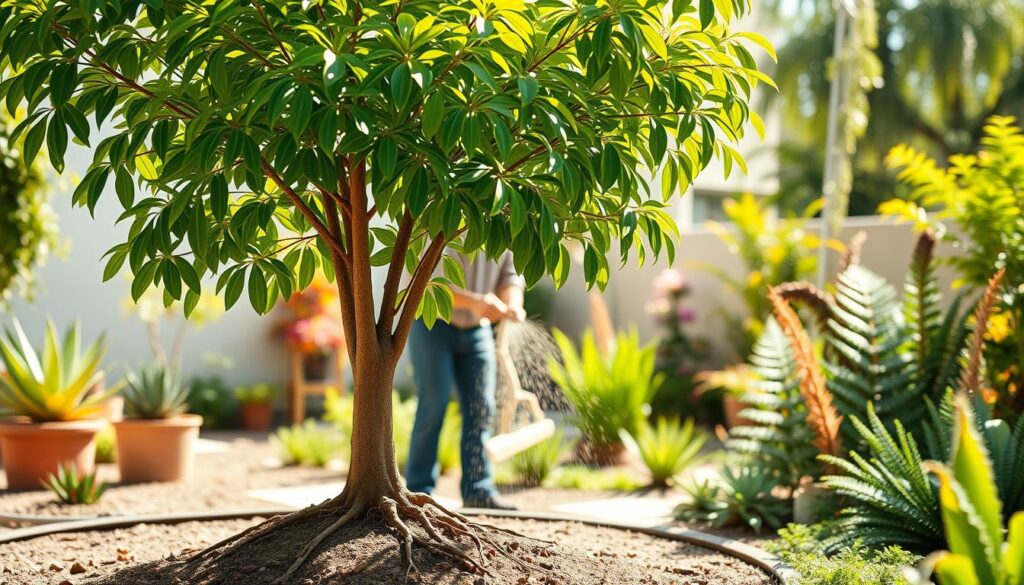
Light Requirements for Money Trees
Proper lighting plays a vital role in the health of your Money Tree and its companion plants. Understanding the indoor plant light requirements can significantly enhance growth and vitality. Money Trees thrive best in locations with bright, indirect light. Positioning them effectively ensures they receive the best light for money tree, which promotes lush green leaves and overall well-being. When considering your plant placement, key factors include natural light sources and maintaining a suitable distance from direct sunlight.
Best Locations for Optimal Growth
To maximize the growth potential of your Money Tree, consider these ideal locations:
- A spot near a north or east-facing window provides gentle morning sunlight.
- A location at least a few feet away from south or west-facing windows to avoid harsh, direct light.
- Potential use of sheer curtains to diffuse direct sunlight while allowing adequate brightness.
Light Needs of Companion Plants
Companion plants share similar light requirements, which reinforces their harmony with the Money Tree. Understanding companion plant light needs will help in arranging them appropriately. For instance:
| Companion Plant | Light Requirement |
|---|---|
| Pothos | Bright, indirect light |
| ZZ Plant | Low light tolerance |
| Spider Plant | Moderate to bright light |
| Snake Plant | Low to bright indirect light |
Arranging these plants near the Money Tree ensures they receive adequate light. Maintaining a harmonious light environment supports healthy growth for all the plants involved, creating a thriving indoor garden.

Temperature and Humidity Needs
For your Money Tree to thrive, paying attention to its temperature and humidity needs for indoor plants is essential. The right balance will not only support optimal growth but will also enhance the overall health of your plant companions. Understanding these factors allows you to create a perfect indoor environment.
Keeping Your Plants Comfortable
When considering money tree temperature care, aim for a range between 65°F to 80°F during the day and slightly cooler at night. This range fosters an ideal setting for your plants. Excessive heat or cold can hinder their growth and lead to stress. In tandem with temperature control, ensuring appropriate humidity levels is vital. Aim for humidity between 40% and 60% to keep your plants hydrated and vibrant. You can increase humidity by using a humidifier or placing water trays near your plants.
Adjusting for Seasonal Changes
As seasons shift, so do the requirements for temperature and humidity. In winter, your indoor environment might become drier due to heating systems. Adjust your money tree temperature care by moving your plants away from drafts and providing extra moisture through misting or pebble trays. In summer, monitor for rising temperatures, as well as humidity levels, and take necessary steps to ensure that your plants remain comfortable. Regularly checking on these factors guarantees thriving plants all year round.

Pruning and Maintenance Tips
Maintaining the health and appearance of your Money Tree and its companion plants involves consistent care and attention. Regular pruning not only shapes your Money Tree but also promotes its vibrant growth. With the right money tree pruning tips, you can ensure a thriving indoor garden. Additionally, understanding how to effectively maintain your companion plants will help reduce the risk of diseases and promote overall health.
How to Prune a Money Tree
When pruning your Money Tree, start by assessing the plant’s structure. Consider removing any dead or damaged branches first. This opens up space for new growth and allows light to reach all areas. Aim to prune in the spring, as this is when the plant naturally grows. Cut back any overly long branches to maintain your desired shape. Make sure to use clean, sharp scissors to avoid damaging the plant. Following these money tree pruning tips will help keep your tree looking its best.
Maintaining Companion Plants Effectively
Effective indoor plant maintenance for companion plants involves regular monitoring and care. Each plant has its unique requirements, but general practices apply. Ensure you are watering appropriately based on each plant’s needs; overwatering can lead to root rot while underwatering can stress the plant. Use the following tips for optimal companion plant maintenance:
- Check for pests and remove them immediately to prevent an infestation.
- Rotate pots every few weeks to ensure even light exposure.
- Dust leaves periodically to enhance their ability to photosynthesize.
The right tips for pruning plants can make a significant difference. By keeping your companion plants healthy, you not only enhance their beauty but also support the overall environment for your Money Tree.

| Maintenance Task | Frequency | Notes |
|---|---|---|
| Pruning | Spring | Focus on dead or damaged branches. |
| Watering | Weekly | Adjust based on plant needs. |
| Pest Check | Biweekly | Remove any pests to protect plants. |
| Dusting Leaves | Monthly | Improves photosynthesis. |
Troubleshooting Common Issues
Tending to your Money Tree and its companions means facing potential challenges, particularly from pests. Identifying these creatures is key to preventing money tree pest problems. Awareness of what you are dealing with allows you to take action before serious damage occurs.
Identifying Pests
Common pests that can affect your Money Tree include:
- Spider Mites: Tiny and often go unnoticed until damage appears.
- Aphids: Small, green insects that cluster on new growth.
- Mealybugs: White, cottony pests typically found in leaf joints.
- Scale Insects: Brown or black, immobile spots on stems and leaves.
Solutions for Common Pests
Addressing these pests effectively requires using indoor plant pest solutions that promote healthy plant growth. Consider the following approaches:
- Use a mixture of water and mild soap to wash pests away.
- Incorporate neem oil for an organic repellent that disrupts the life cycle of pests.
- Introduce beneficial insects like ladybugs or lacewings that naturally prey on harmful pests.
- Ensure proper plant care through regular inspections and appropriate watering practices to maintain plant health.
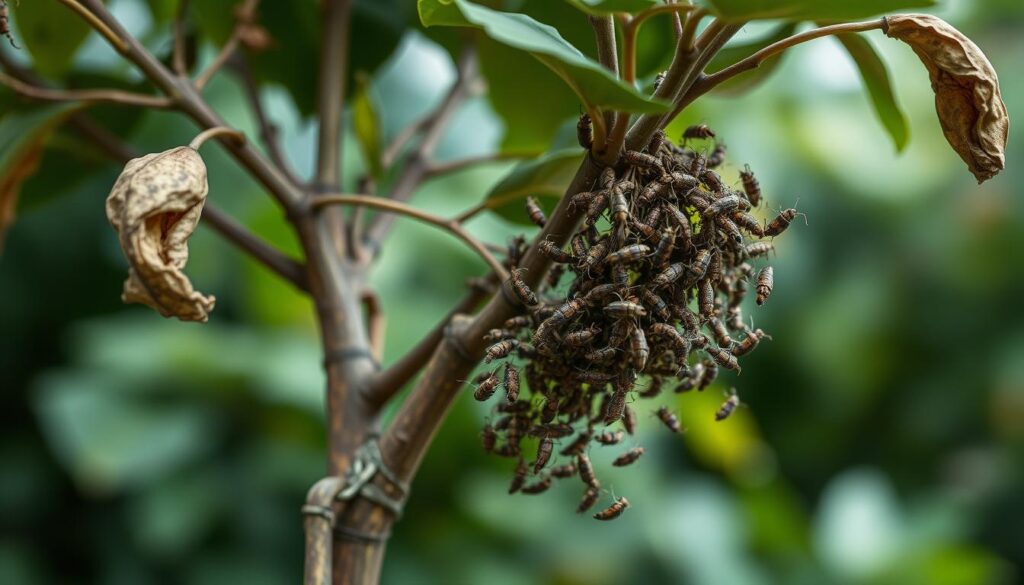
Harvesting and Utilizing Benefits
Harvesting plants indoors can be a rewarding experience, allowing you to enjoy the numerous benefits of companion plants while enhancing your indoor garden. Understanding how to gather growth from these companions not only improves your plants’ overall well-being but also brings a personal touch to your home decor.

Gathering Growth from Companion Plants
Many companion plants offer more than just aesthetic appeal; they also provide practical benefits. You might consider taking cuttings from plants like basil or mint. These herbs thrive alongside money trees and can be easily propagated. Some plants, such as Swiss chard or kale, can yield fresh leaves that you can use in delicious recipes. The joy of harvesting means not only enjoying ready-to-use greenery but also ensuring a continuous supply.
Enhancing Your Indoor Garden
Utilizing the foliage and cuttings from your companion plants can significantly elevate your indoor garden aesthetics. Creating arrangements that feature vibrant greens, like spider plants cascading over the edges of pots, enhances the visual dynamics of your space. Explore various indoor gardening techniques to maximize space and light, making your indoor oasis both functional and appealing.
Creating a Balanced Indoor Garden
Crafting a beautiful indoor garden begins with thoughtful arrangement and selection of your plants. Utilizing indoor garden design tips can elevate your space from ordinary to extraordinary. Arranging houseplants strategically ensures each plant receives appropriate light and contributes to an overall *harmonious plant arrangement*.
Arranging Your Money Tree with Companions
When placing your Money Tree alongside companion plants, start by considering the qualities of each one. Each plant might differ in height, foliage density, and care requirements. Position taller plants behind or beside your Money Tree to maintain visual balance. Place smaller plants or those with delicate leaves in front, allowing all plants to thrive.
Tips for A Cohesive Garden Look
To achieve a unified look within your indoor garden, keep the following tips in mind:
- Color Coordination: Choose plants that complement each other in color, blending shades of green or adding floral accents that don’t overwhelm.
- (Height Variation:Mix short and tall plants to create dimensions that draw the eye throughout the space.
- Consistency in Pot Style:Use similar pots to maintain a cohesive vibe, whether that means uniform color or material.
- Similar Care Needs: Group plants with similar watering and light requirements to make maintenance easier.
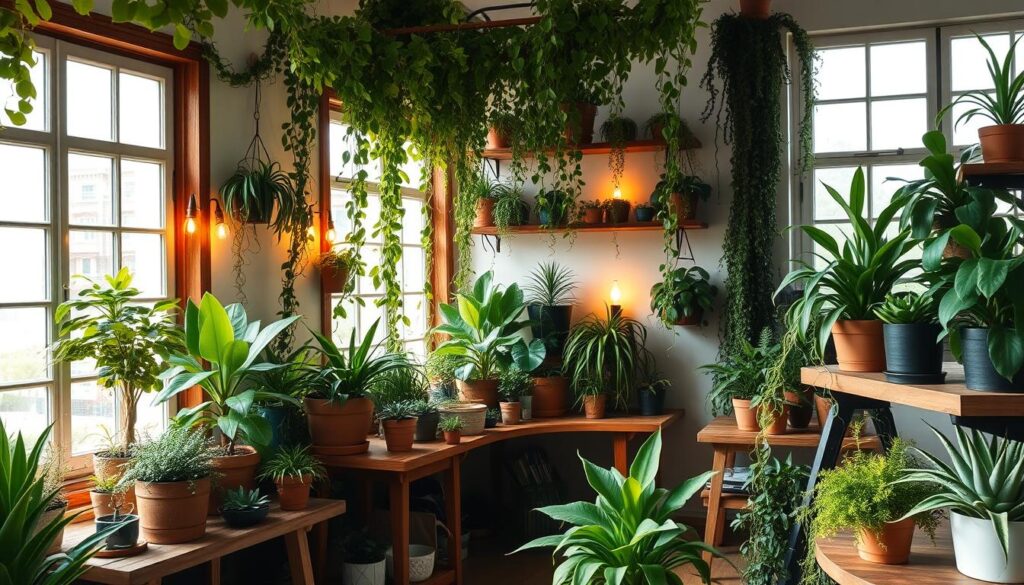
With thoughtful organization and these simple strategies, your indoor garden can flourish beautifully. Each plant contributes not just to the aesthetic appeal but also to a thriving indoor ecosystem.
Seasonal Care Tips
Providing proper seasonal plant care is crucial for your Money Tree and its companions. Adapting care according to the seasons not only fosters healthier plants but also enhances growth and longevity. You will find that adjusting care for seasons involves altering watering schedules, fertilization routines, and pruning techniques. This ensures your indoor garden thrives throughout the entire year.
Adapting Care for Different Seasons
As the seasons change, so too must your gardening strategies. In spring and summer, your Money Tree will require more frequent watering due to increased growth. Pay attention to the amount of sunlight your plants receive, as this can affect their watering needs. Conversely, fall and winter bring cooler temperatures, necessitating a reduction in watering to prevent root rot.
- Spring: Increase watering and begin fertilizing to promote growth.
- Summer: Maintain consistent moisture but avoid overwatering.
- Fall: Gradually reduce watering as plant growth starts to slow.
- Winter: Water sparingly and do not fertilize during dormancy.
Seasonal Fertilization and Pruning
Seasonal fertilization plays a vital role in your gardening year-round. In the warmer months, use a balanced fertilizer to support vibrant growth. During the winter, halt fertilization to allow the plants to rest. Pruning occurs mostly in spring, which helps shape your plants and remove any dead or unhealthy foliage. Regularly check for signs of growth to guide your pruning practices effectively.

Final Thoughts on Your Planting Journey
As you conclude your exploration with Money Trees and their perfect companions, you are likely to appreciate the numerous rewards of indoor gardening. Each experience, from the initial planting to caring for your green friends, enriches not just your living space but also your life. Embracing the joys of nurturing plants allows you to create a sanctuary that reflects your personality while providing fresh oxygen and beauty.
Continuing your plant care journey is essential for both personal growth and the health of your indoor garden. The process of learning about plant care enhances not only your skills as a gardener but also deepens your relationship with nature. Regularly experimenting with different species and tweaking your care routines can yield surprising results, leading to thriving plants and increased satisfaction.
Remember, this journey is not merely about growing plants; it’s about cultivating a deeper connection to your environment. With each leaf that unfurls and each new root that grows, you are reminded of the ongoing possibilities in this rewarding adventure. Embrace the continuous learning that comes with plant care and enjoy the vibrant space you’re creating.
